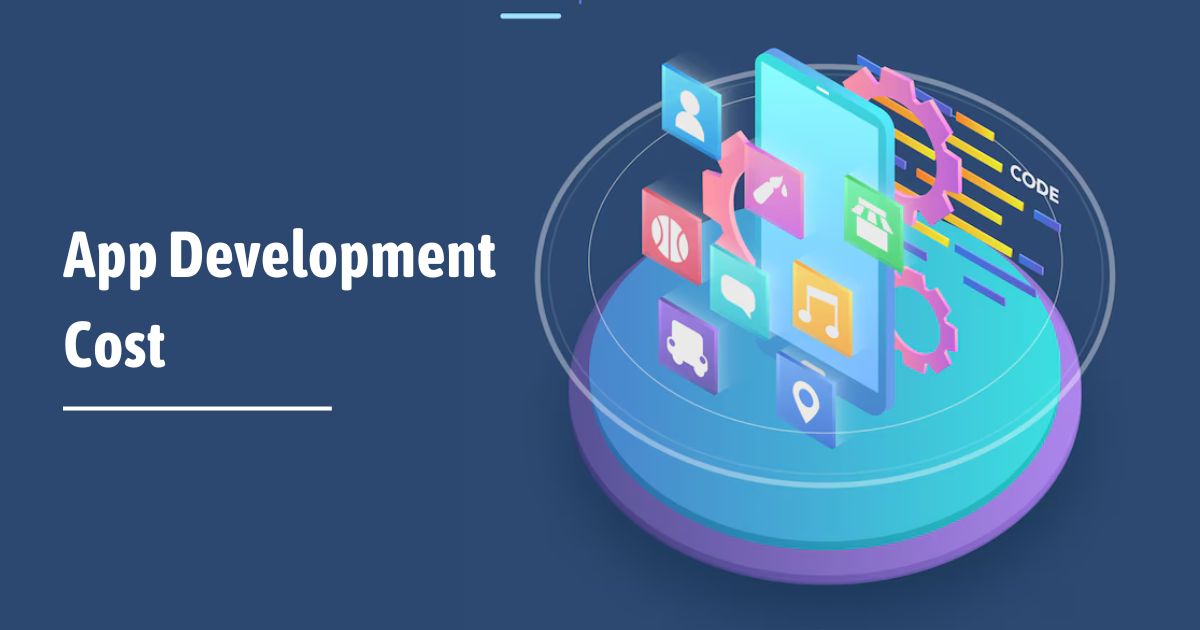Business people have embraced the use of mobile apps in their operations to ensure that they are on par with the big companies. As the dependency on smartphones and applications for services widens, having a fully optimized application can enhance customer satisfaction and improve service accessibility. However, one of the most pressing questions for small businesses considering app development is: How much does app development cost for small business?
However, to avoid confusing the picture, it is crucial to understand the general picture. This blog will discuss app management costs for small businesses, the advantages of app development, future prospects, and, ultimately, the 7 factors that will impact app development costs for small businesses in 2025.
What is App Development?
Mobile app development means acquiring applications for hand-held devices, including smartphones and tablets. These apps can serve various purposes, including customer service, sales and marketing, and internal communication. A mobile application can benefit a small business in several ways, including increasing online visibility, customer interaction, and satisfaction to further expand its competitiveness in the market.
Why are App Development Solutions for Small Businesses Important?
1. Enhances Customer Engagement
Having an app proves useful for small businesses because it creates a way for them to easily get in touch with their customers. It enables companies to communicate with their consumers, improve consumer loyalty through enhanced consumer relations, and send messages for new specials or updates to bosses, thus keeping customers interested.
2. Improves Accessibility
An app allows businesses to be easily accessed by customers anytime, anywhere. Customers can acquire services by either purchasing a product or seeking assistance, hence improving their chances of future patronage.
3. Streamlines Business Operations
An enhanced application can easily manage many business activities, such as order tracking, customer inquiries, and even inventory. It automates many processes, sparing time that can be used to increase business.
4. Drives Revenue
Many small businesses have successfully used apps to tap into new revenue streams. For example, an e-commerce business can increase sales through an app by offering exclusive app-only discounts or services, thus incentivizing customers to purchase through their app.
Future of Mobile App Development for Small Businesses
As we head into 2025, mobile apps will only continue to evolve, becoming more sophisticated and integral to business operations. Emerging technologies such as artificial intelligence (AI), augmented reality (AR), and the Internet of Things (IoT) are expected to shape the future of mobile apps. These technologies are making apps more intelligent, responsive, and capable of offering personalized experiences.
Moreover, 5G technology promises to boost app performance, enabling faster and more reliable connections. This will be a game changer, especially for apps requiring real-time updates and data streaming, which could increase development complexity and app management costs for small businesses.
Top Factors Influencing App Development Cost for Small Business
Understanding the cost factors when developing an app can help small businesses budget effectively and make informed decisions. Let’s explore the key factors that impact app development cost for small business.
1. Complexity of the App
The more complex your app is, the higher the development costs. An app with essential features like a simple user interface, few screens, and basic functionalities will cost significantly less than an app with advanced features like real-time updates, geolocation, in-app purchases, and integration with external systems.
For instance, an essential app may cost between $10,000 and $50,000, whereas a more complex app could range from $100,000 to $500,000, depending on the features. Focusing on core functionalities can help small businesses reduce initial costs while allowing for future scalability.
2. Design and User Experience (UX)
Another significant factor is the cost of app design for small businesses. Design isn’t just about making an app look good—it’s about creating an intuitive and user-friendly experience. The more attention you pay to design and user experience, the more resources you need to allocate to this development phase.
Custom designs, interactive elements, and animations increase development time and costs. Depending on the complexity and expertise of the designers involved, businesses can expect to spend around $5,000 to $30,000 on app design on average.
3 Platform (iOS, Android, or Both)
Choosing the right platform is crucial. Developing an app for just one platform (iOS or Android) is less expensive than developing for both. However, many businesses opt for cross-platform development to reach a wider audience, which can significantly increase costs.
Cross-platform apps tend to be more expensive due to the need for additional coding and testing. A mobile app development company may charge an extra 20% to 30% for developing on both platforms simultaneously. However, this investment might pay off in the long run, allowing you to capture a larger market.
4. App Maintenance and Updates
App development doesn’t stop at the launch. Regular maintenance, updates, and bug fixes are essential to keep the app functioning smoothly and securely. Small businesses often overlook maintenance costs when budgeting for app development, but they are a crucial part of the app management cost.
On average, businesses should budget 15% to 20% of the initial development cost annually for maintenance and updates. This ensures that the app remains up-to-date with the latest operating system versions, bug fixes, and security patches.
5. Integration with Third-Party Services
Many apps rely on third-party services for payment processing, social media integration, analytics, and more. Each integration adds to the development cost. For instance, integrating a payment gateway like PayPal or Stripe can add $5,000 to $15,000 to the overall budget, depending on the complexity of the integration.
Additionally, these third-party services may have their own fees, which will add to small businesses’ ongoing app management costs.
6. Developer Expertise and Location
The location and expertise of your development team play a significant role in determining the overall app development cost for small business. Hiring developers from countries with higher living costs, such as the United States or Western Europe, will generally result in higher development costs than hiring developers from Eastern Europe, Asia, or South America.
Developers’ hourly rate varies widely based on their experience and geographical location. In the US, rates can range from $100 to $200 per hour, while in Eastern Europe or India, rates are $20 to $50 per hour.
7. App Security and Data Protection
In today’s digital landscape, app security is non-negotiable, especially with the increasing threat of data breaches and cyberattacks. Small businesses handling sensitive customer data—such as payment information or personal details—must invest in robust security measures.
Implementing advanced security protocols such as encryption, multi-factor authentication, and secure data storage can reduce development costs. However, more security is needed to avoid costly breaches and legal liabilities, which far outweigh the initial investment.
How Small Businesses Can Control App Development Costs
With app development potentially a substantial investment, small businesses must adopt cost-saving strategies without compromising quality. Here are a few tips:
1. Prioritize Features
Identify the core features that are essential to your business and users. By focusing on must-have features, you can launch your app with a smaller budget and scale it later with additional features based on user feedback.
2. Use Pre-built Solutions
Consider using pre-built templates, frameworks, or third-party tools where possible. These can save you time and money compared to developing custom solutions from scratch.
3. Outsource Development
Outsourcing the development to a competent mobile application development firm with an understanding of business applications for small businesses is cheaper than rarely having in-house talent. Most development companies provide packages that are specifically targeted for small businesses, in which the services include design, development, testing, and maintenance at cheaper rates.
4. Opt for MVP (Minimum Viable Product)
An MVP enables a user to bring a lighter version of an application to the market so that the market response can be evaluated. This way, you reduce risk and deal with it by investing in those features your users value, not in the features that can simply be dismissed as unnecessary after a costly development phase.
Wrapping Up
The cost of developing an app for a small business depends on factors such as App design, App complexity, Platforms, and App maintenance. Due to these reasons, it becomes essential for small business organizations to understand these elements so that they can design their budget appropriately. Even though it might require a lot of resources to develop an app, having more customers, working more efficiently, and generating a good amount of income compensate for it.
Thus, it is relevant to launch an application with a moderate budget only by concentrating on its key characteristics, applying various cost-cutting methods, and cooperating with a reliable mobile application developer.
FAQs
1. What does small business app development cost on average?
Consequently, developing an app may cost between $10,000 and over $100,000, depending on its complexity, design, and other aspects, such as the platforms to be considered for use.
2. What are the ways through which small businesses can minimize the cost of developing their apps?
This paper identifies various strategies that small businesses can adopt to minimize the cost of app development, including focusing on key features, using off-the-shelf solutions, outsourcing development, and employing MVPs.
3. What are the probable recurring expenses as I run my app?
You will also continue to incur costs for app updates, bug fixes, security enhancements, and fees from third-party services.
4. What option is better to launch an app for iOS, Android, or both?
The choice of one brand over the other depends on the target market. Specifying for both platforms will put you in a position to capture a broader market share. However, the cost of doing so will be captured.



